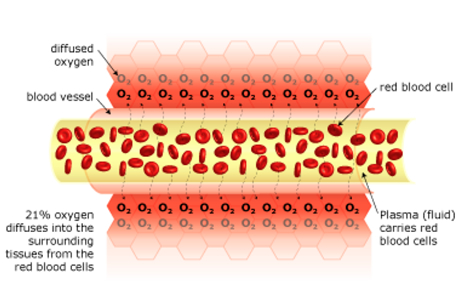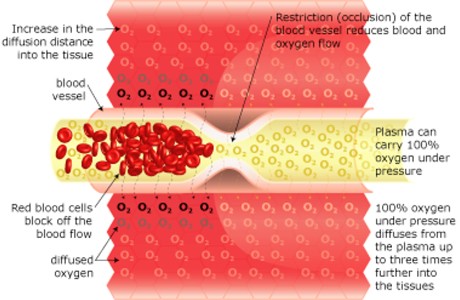According to Thomas H. Shaffer, professor emeritus of physiology and pediatrics at Temple University School of Medicine,a person could survive for a limited time without circulation of [perfluorocarbons], provided the liquid was rich with oxygen and devoid of carbon dioxide.” In addition, he says, if the fluid is cold (to lower metabolism). However, Shaffer notes, the book “sadly only reflects a rather dark application for the use of breathing liquids.” In Newscripts, I mention the use of the technique for treating respiratory illness in infants, but oxygenated perfluorocarbons also have application in head cooling (for stroke and cardiac-arrest victims), drug delivery, deep-sea diving, and space travel. In theory, liquid breathing could assist in the treatment of patients with severe pulmonary or cardiac trauma, especially in pediatric cases.
Although total liquid ventilation (TLV) with completely liquid-filled lungs can be beneficial, the complex liquid-filled tube system required is a disadvantage compared to gas ventilation — the system must incorporate a membrane oxygenator, heater, and pumps to deliver to, and remove from the lungs tidal volume aliquots of conditioned perfluorocarbon (PFC). One research group led by Thomas H. Shaffer has maintained that with the use of microprocessors and new technology, it is possible to maintain better control of respiratory variables such as liquid functional residual capacity and tidal volume during TLV than with gas ventilation. Consequently, the total liquid ventilation necessitates a dedicated liquid ventilator similar to a medical ventilator except that it uses a breathable liquid. Many prototypes are used for animal experimentations, but experts recommend continued development of a liquid ventilator toward clinical applications. In slight contrast partial liquid ventilation is technique in which Perfluorochemical PFC is instilled into the lung approximating 40% of total lung capacity
In medicine adding oxygen to blood have several benefits allow the patient to heal much quicker then what normally takes a while. This new therapy is similar to hyperbaric oxygen therapy (HBOT), is the medical use of oxygen at a level higher than atmospheric pressure. The equipment required consists of a pressure chamber, which may be of rigid or flexible construction, and a means of delivering 100% oxygen. HBOT found early use in the treatment of decompression sickness. But it has also shown great effectiveness in treating conditions such as the bends, but also burns and other forms of tissue damage. In delicate surgery such as a heart operation. To quickly heal a damaged area of the heart, blood with a saline solution and high concentrations of oxygen was pumped into the heart. The oxygen rich solution served, both healed and supported damage tissue enhances the patients chances of survival. Though this type of therapy is not common it is hoped that other hospital would take up more research.
 Also a research team at Boston children's hospital have stated that their method of adding oxygen to a layer of lipids, which serve as a component for cell walls or fats. The fatty oxygen particles are about 2 to 4 micrometers in size. They can be suspended in a liquid solution that can be easily carried around and used by paramedics and other emergency crews, adding a extra 15 to 30 minuets to the medical golden hour. Previous experiments with similar solutions have failed leading to gas embolism Large (bubbles form in the artery) rather that oxygenating the cells.
Also a research team at Boston children's hospital have stated that their method of adding oxygen to a layer of lipids, which serve as a component for cell walls or fats. The fatty oxygen particles are about 2 to 4 micrometers in size. They can be suspended in a liquid solution that can be easily carried around and used by paramedics and other emergency crews, adding a extra 15 to 30 minuets to the medical golden hour. Previous experiments with similar solutions have failed leading to gas embolism Large (bubbles form in the artery) rather that oxygenating the cells.The future, most people would like to think that this technique of liquid breathing may have great potential for space travel and deep sea diving. Though it isn't common for divers to use or submarine crew to have this equipment to escape a damaged vessel. I'd think it would be left as a science fictional possibility. Meanwhile medically, the use of oxygenating the blood by solution is a far better idea. Considering the emergency time can be lengthened and healing delicate tissues is a real need, the medical benefits are steadily gaining ground. Hopefully one day there will be no fatalities in the golden hour of a medical emergency, instead there might be a simple injection in every emergency medical kit to extend life.



Very informative blog post... Hyperbaric oxygenation treatment are helpful in many health conditions. This blog post provide detailed information on how hyperbaric treatment work and help in treatment. Thanks for sharing
ReplyDelete